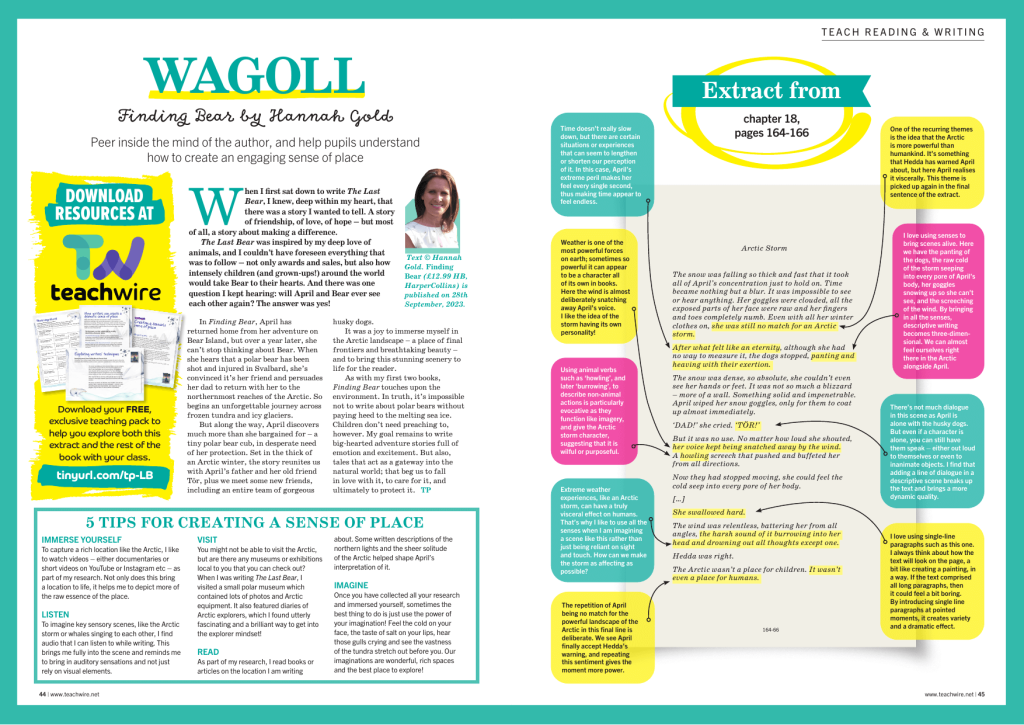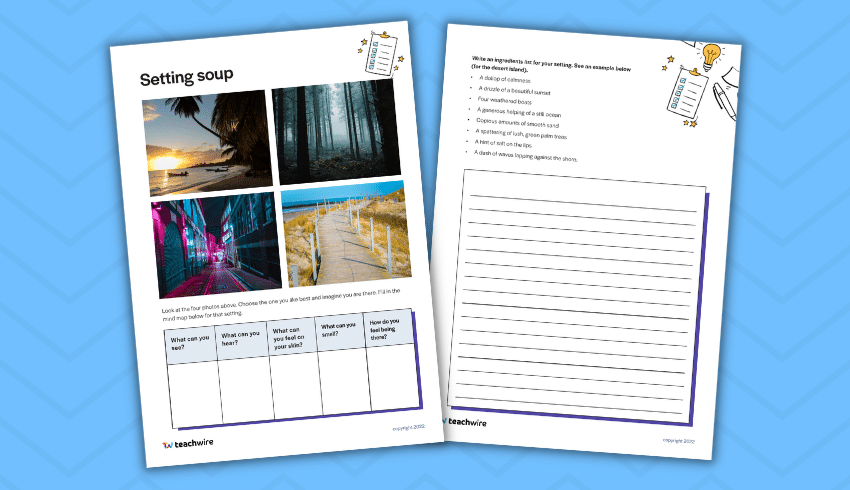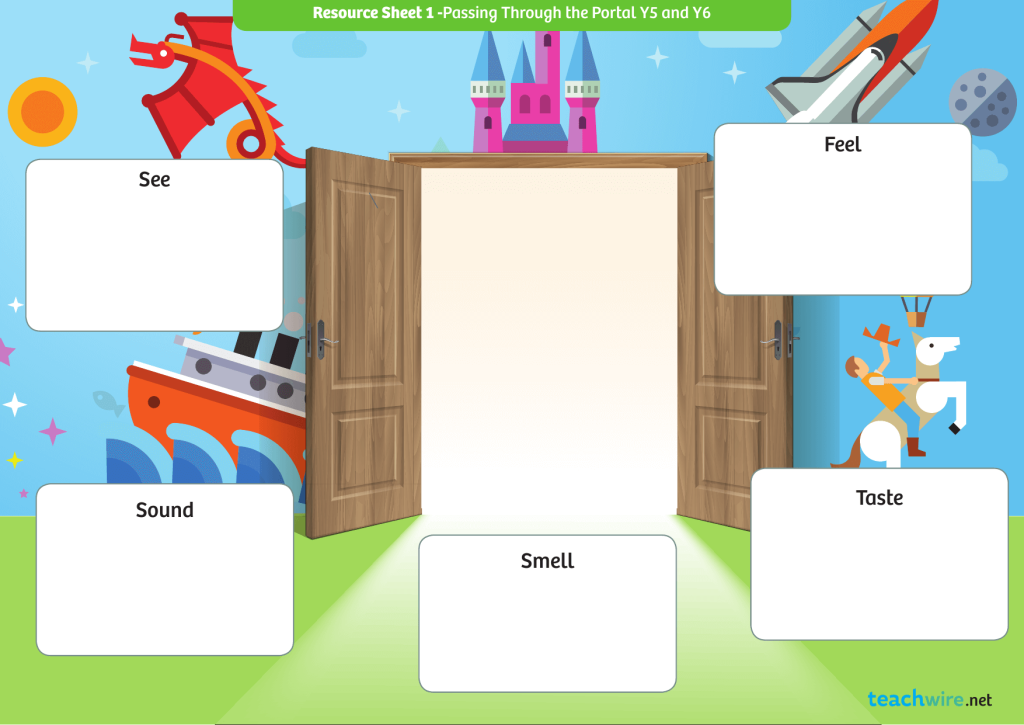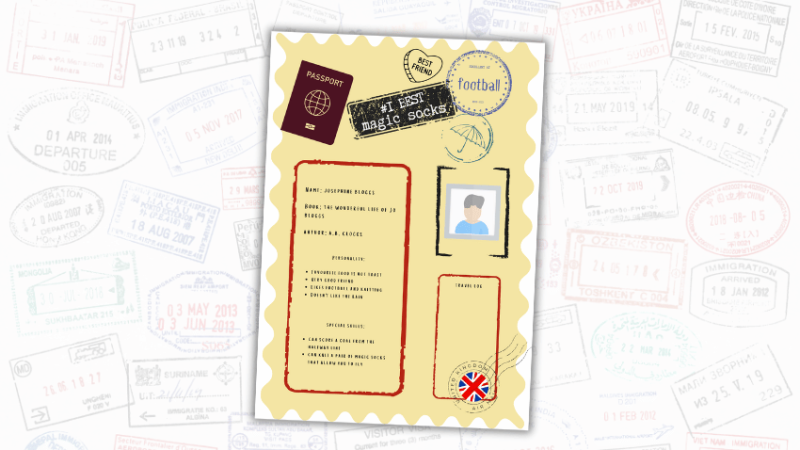Setting description – Resources & advice for writing outstanding settings

Use these strategies and resources to give children the tools they need to create powerful settings for their stories…

- by Sue Drury

A setting description can go a long way towards establishing the atmosphere of a narrative and giving it a sense of tangible reality for the reader. Yet, we often under-emphasise this when it comes to teaching story writing skills.
Use these downloadable resources and advice from teacher Sue Drury to up your students’ game when it comes to writing a good setting description…
Setting description resources
WAGOLL resource pack

Use this free WAGOLL and accompanying worksheets to help pupils refine their descriptive writing skills. The example comes from Finding Bear by Hannah Gold. You’ll get teacher notes, worksheets, an extract from the book plus working wall resources and more.
Pie Corbett model text

Use Pie Corbett’s imaginary worlds KS2 model text to help pupils write about settings full of wonder and secrets. The download contains Pie’s original story, My Iceland, plus an accompanying lesson plan full of reading and writing ideas and activities.
Science fiction writing inspiration
This KS2 story writing inspiration pack from literary resources website Plazoom helps children develop high-quality writing around a science fiction theme. It features pictures, short example texts and a story planner workbook to help pupils on their way.
Setting soup worksheet

This free creative writing worksheet features four intriguing setting photos. Pupils need to select their favourite and then fill in a mind map about it, imagining what they see, hear, feel and smell. Next they need to create an ingredients list for their setting, such as:
- A dollop of calmness
- A drizzle of a beautiful sunset
- A generous helping of a still ocean
Scary adjectives word mat

Enhance your pupils’ descriptive writing skills with this scary adjectives PDF, perfect for helping children craft chilling and atmospheric settings that elevate their creative writing.
Create a magical World Cup setting

What if the World Cup was in outer space? Would gravity affect the offside rule? This KS1 lesson plan encourages children to create their own magical World Cup settings. Pupils will learn the importance of setting the scene in creative writing and how to identify the features of descriptive writing in fiction.
Passing through the portal worksheet

Authors frequently use doors and portals to structure fantasy stories, making them useful devices for KS2 descriptive writing. This worksheet, with accompanying teacher notes, scaffolds the process by providing a space for a drawing of a setting and spaces for pupils to write descriptive phrases based on their senses.
KS3 Gothic setting description lesson plan

This Gothic setting description lesson plan for KS3 will encourage students to take their creative writing to a whole new level. Begin by closing the blinds, turning off the lights, playing spooky music and displaying an image of a haunted-looking house…
Advice for creating powerful settings for stories
Use these simple strategies from teacher Sue Drury to give children the tools they need to create powerful settings for their stories…
As with all good creative writing, an engaging story starts with a good plan. As well as outlining the characters, overall plot, important events and so on, it’s essential that this contains detailed information about any settings.
Encourage your pupils to form a clear picture in their heads of these locations. Note down key words and rich descriptions. Try getting them to close their eyes and sit in silence while they create vivid pictures with their minds. They can then convert these into great descriptive writing.
What’s more, urge them to focus on the little things as well as the big backdrops. After all, details often make a memorable difference.
“Urge them to focus on the little things as well as the big backdrops”
One of the first things to encourage your pupils to do is to engage all their senses when writing the setting. The temptation is often just to describe what can be seen. However, sounds and smells can often connect more powerfully with people than what merely meets their eyes.
Even the sense of touch, like the chilling caress of a sudden breeze, can add to the atmosphere.
Writing success criteria – show not tell
There are few hard and fast rules governing how to write a setting description. However, ‘show not tell’ has to be one of them. Although this is more straightforward when describing characters and actions, it can be applied to settings in the way that the protagonists interact with their surroundings.
Even so, this does not totally negate the need for precise and evocative vocabulary.
“There are few hard and fast rules governing how to write a setting description”
As much as we like to encourage pupils to use their very best words, it’s possible to have too much of a good thing. Encourage children to focus on the things that really contribute to the establishment of a convincing setting and actually matter to the progress of the plot.
Historical setting description creative writing skills
Different fiction genres place different demands on the writer when it comes to setting the scene. Take historical novels for example. Part of the joy of these stories is that they can also function as a sort of informal history lesson. They provide a fascinating insight into how people used to live.
That is why it is so important to help your pupils make the settings as realistic as possible. They need to include details that have a chance of informing as well as entertaining.
Of course, not all stories are set in the real world. Although science fiction and fantasy give writers more scope for letting their imaginations run free, they do need to have some form of containment – otherwise the reader will be just too bamboozled to read very far. That is when planning becomes particularly important.
Once your pupils are happy with their plans, they still need to weave all the details into a coherent tale. Never underestimate how difficult this might be for KS2 children. You might even find it necessary to provide more structured writing frames for when they ultimately start composing their stories.
Nevertheless, with a good setting firmly embedded in their minds, at least they won’t be starting with a blank canvas.
Sue Drury is literacy lead at Plazoom, the expert literacy resources website. Follow Plazoom on Twitter at @plazoomshop.








